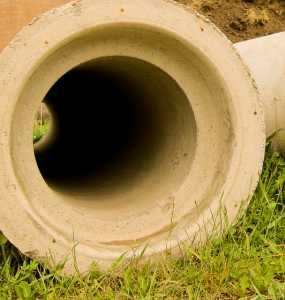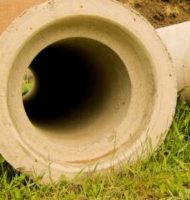
24 Jul Flushing May Not Get the Lead Out of Water Lines
MedicalResearch.com Interview with:
 Adrienne Katner, DEnv
Adrienne Katner, DEnv
Assistant Research Professor of Environmental & Occupational Health Sciences
LSU Health
New Orleans School of Public Health
MedicalResearch.com: What is the background for this study?
Response: Ever since Flint, there’s been a lot of interest by the public in how to reduce exposures to lead in water. Several news articles suggested that many consumers and school officials have been considering flushing as a routine exposure prevention measure.
But before Flint, we had a much worse lead in water crisis which didn’t get as much public attention- an event which happened in Washington DC between 2001 and 2004. That event demonstrated that flushing for only 15–30 seconds would expose people to lead in cities which had lead service lines- these are water pipes which bring water from the main in the street to the home. A decade of follow up research confirmed that flushing protocols are highly dependent on variables that are difficult or impossible to control, including the length, material, condition and disturbance of water service lines, and water use patterns.
However, this knowledge has not translated into widespread changes in public health messaging. In fact, the EPA still requires water utilities to promote flushing as an exposure prevention measure. The original required messaging was to run the water for 15–30 seconds. EPA eventually recognized the need for longer flush times in homes with lead service lines, and they revised the regulations to allow utilities to modify flush times, but many water utilities continued to rely on the same messaging year after year.
We thought it was about time to test the recommendations in one of these cities- New Orleans, LA. Best estimates from the mid-1990s suggested that lead service lines may comprise 65–80% of the city’s service line system. The city’s water utility encouraged residents to flush their taps for 30 sec to 2 min daily under normal use conditions.
New Orleans is unique in that extensive hurricane damage to water infrastructure has necessitated a historically unprecedented scale of infrastructure replacement. While over ten years have passed since Hurricane Katrina, the rebuilding process is ongoing—city and utility officials are in the process of conducting 16,000 partial lead service lines replacements- activities which are well known to destabilize scale that has been intentionally built up in the pipes over time to reduce lead from leaching into the water. We had previously observed high water lead levels in homes after line replacements- along the order of 200 ppb. To put that into perspective, the EPA’s water standard for lead is 15 ppb. But even in undisturbed normal use homes we observed lead levels as high as 58 ppb.
To evaluate whether flushing could effectively reduce water lead levels, we collected over 1400 water samples from 376 residential sites. Samples were collected at first draw, and after incremental flushes of 30–45 s; 2.5–3 min; and 5.5–6 min. We also collected survey data to better understand water use habits, homes treatment systems, and flushing practices.
MedicalResearch.com: What are the main findings?
Response: Overall New Orleans’ water lead levels at occupied residential sites were typically low (≤5 ppb); however, low-dose detectable waterborne lead is widespread across the city. Spurred in part by what researchers have learned about the adverse health impacts of chronic exposures to low level lead, the American Academy of Pediatrics’ (AAP) recommended that water lead levels in schools not exceed 1 ppb. But over half of tested New Orleans homes exceeded that level.
Furthermore, while we found that flushing taps for 30 s to 2 min may reduce water lead levels for some homes, but over half the tested homes had peak lead levels after a 30 s or 2 min flush. Thus these recommendations may inadvertently increase lead exposures. Significant declines in water lead levels were only seen after extended flushing for 6 min, but these changes were not substantial (<1 ppb); and over half the extended flush samples still had detectable lead.
MedicalResearch.com: What should readers take away from your report?
Response: While flushing may not be consistently effective for reducing exposure, it is effective for remediating water with high particulate lead as we saw in Flint, Michigan. In those cases, however, extended and more rigorous flushing may need to be repeated regularly over a long time period.
Promotion of flushing for the purpose of exposure prevention needs to be reconsidered. Almost all New Orleans survey respondents (93%) reported using unfiltered tap water for either cooking or drinking at some point in time. And while only 21% reported flushing water prior to use, most flushed for half a minute or less.
Other more effective low-cost technologies, such as water filtration devices, are now widely available. You can get NSF-53 certified filters for as little as $15- these filters are lab-tested and certified to significantly reduce water lead levels.
MedicalResearch.com: What recommendations do you have for future research as a result of this work?
Response: There’s a lot more we need to understand about the cumulative impact of chronic exposures to low-dose lead on childhood development, lifetime neurocognitive and cardiovascular outcomes, and reproductive health. Until then we must rely on interventions which are evidence-based. We have just begun a HUD-funded study to test some of the NSF-certified filter products in the lab; and we will soon be testing them under specific field conditions, where high iron and other particulates could impact filter efficacy and microbial growth. But this research will be meaningless unless we get the message across to the public. Messaging is needed that targets low-literacy, low-income and non-English speaking communities. Messaging should be both motivational and informative. It should educate people about the impacts of low-dose lead, and inform them on how to select, implement and maintain NSF-certified filters.
MedicalResearch.com: Is there anything else you would like to add?
Response: The EPA has long asserted that meeting regulatory requirements for lead does not always guarantee public health protection to everyone in a city. Because lead is picked up from both the water distribution system and the home plumbing, water treatment needs to be a shared responsibility between the utility and resident. While changing out all leaded plumbing is the only solution, it is one that not all utilities, residents or school systems can afford. In the meantime, we need to stress the importance of the need for residents to be more proactive in protecting their family’s health, and to participate in the safety of their water supply, by learning about and using home water treatment systems. Residents will only recognize their roles in this partnership, though, if it is one built on mutual respect and trust. This will require public education, utility transparency, and public access to data and information.
Citation:
Int. J. Environ. Res. Public Health 2018, 15(7), 1537; https://doi.org/10.3390/ijerph15071537
Effectiveness of Prevailing Flush Guidelines to Prevent Exposure to Lead in Tap Water
Adrienne Katner ,Kelsey Pieper ,Komal Brown, ,Hui-Yi Lin ,Jeffrey Parks ,Xinnan Wang
,Chih-Yang Hu ,Sheldon Masters 3,Howard Mielke 4 and Marc Edwards 2
[wysija_form id=”3″]
[last-modified]
The information on MedicalResearch.com is provided for educational purposes only, and is in no way intended to diagnose, cure, or treat any medical or other condition. Always seek the advice of your physician or other qualified health and ask your doctor any questions you may have regarding a medical condition. In addition to all other limitations and disclaimers in this agreement, service provider and its third party providers disclaim any liability or loss in connection with the content provided on this website.
Last Updated on July 24, 2018 by Marie Benz MD FAAD
